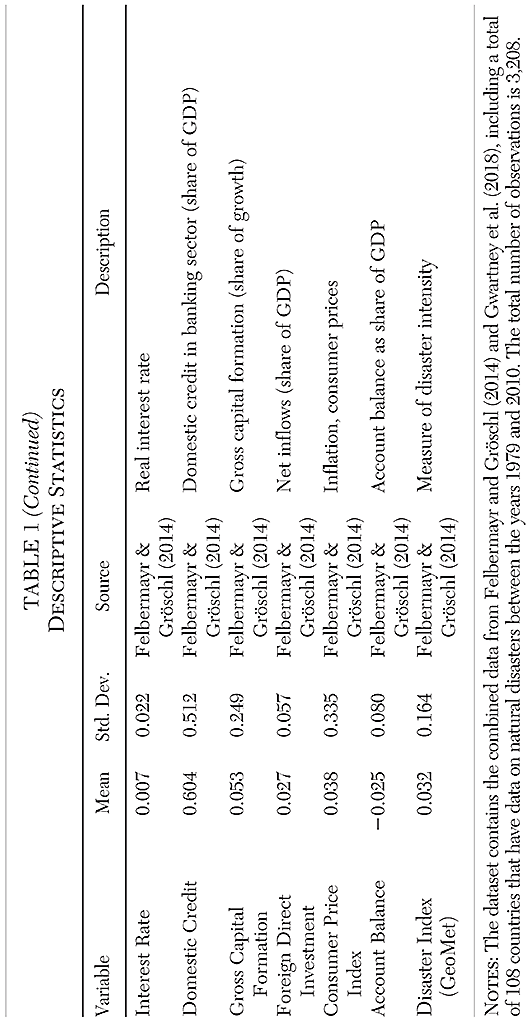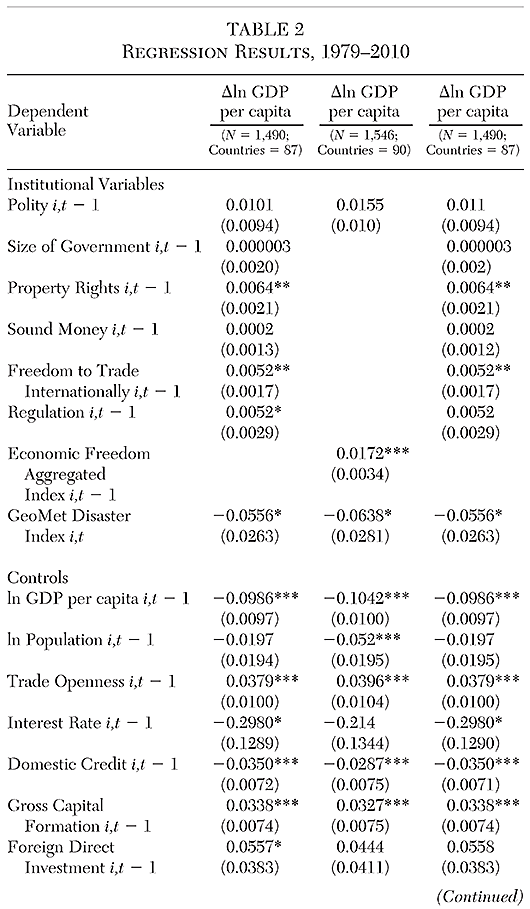As reasonable as Bastiat’s argument might sound, it is not clear if natural disasters, or any destructive event for that matter, should affect economic growth and in which direction it might do so. There is a difference in the predictions that an economist would obtain with neoclassical growth models and certain endogenous growth models. While the former theorizes that a natural disaster—that is, a negative shock to capital or both to capital and labor—decreases output in the short run, it does not affect the steady‐state of the economy in the long run. Neoclassical models also predict that the destruction of the capital stock will temporarily accelerate growth immediately after the disaster by increasing the marginal return on capital. On the other hand, some endogenous growth models based on Schumpeterian creative destruction can predict an overall higher growth rate produced by an accelerated replacement of the capital stock with more productive capital, as is the case in vintage capital models (Hallegatte and Dumas 2009).
Given the extensive debate regarding natural disasters and economic growth, in an attempt to shed light on the mechanisms by which these destructive events affect the economy, we ask whether economic institutions and, in particular, economic freedom, is relevant for obtaining a higher rate of economic growth, independent of whether this growth is positive or negative. There are not many articles that have studied the relationship between institutions and economic growth after natural disasters. In our review of the literature, we found the following published articles: Felbermayr and Gröschl (2014), Barone and Mocetti (2014), Raschky (2008), and Kahn (2005). Our objective is to expand on this literature by emphasizing the role of economic freedom as a relevant factor in explaining the economic recovery process in the aftermath of disasters, which is increasingly relevant today given the climate change projections for the next decades. As the frequency of natural disasters increases and their economic impact in society can be ameliorated with better institutions, it becomes imperative to find out, with as much precision as possible, which institutions are relevant and what policies can be put in place to lessen the destruction.
In the following section, we discuss the relevant literature regarding the impact of natural disasters on output and the role of institutional measures. Then we describe our methods and data, present the regression results, and offer some concluding comments.




